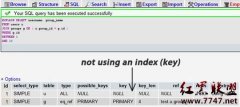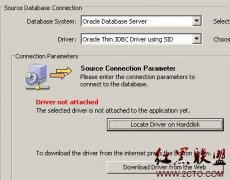Mysql源码学习——用户认证原理与实现(5)
thd->main_security_ctx.host_or_ip);
return 1;
}
}
else /* Hostname given means that the connection was on a socket */
{
...
}
vio_keepalive(net->vio, TRUE);
...
char *user= end;
char *passwd= strend(user)+1;
uint user_len= passwd - user - 1;
char *db= passwd;
char db_buff[NAME_LEN + 1]; // buffer to store db in utf8
char user_buff[USERNAME_LENGTH + 1]; // buffer to store user in utf8
uint dummy_errors;
uint passwd_len= thd->client_capabilities & CLIENT_SECURE_CONNECTION ?
(uchar)(*passwd++) : strlen(passwd);
db= thd->client_capabilities & CLIENT_CONNECT_WITH_DB ?
db + passwd_len + 1 : 0;
uint db_len= db ? strlen(db) : 0;
if (passwd + passwd_len + db_len > (char *)net->read_pos + pkt_len)
{
inc_host_errors(&thd->remote.sin_addr);
my_error(ER_HANDSHAKE_ERROR, MYF(0), thd->main_security_ctx.host_or_ip);
return 1;
}
...
/* If username starts and ends in "'", chop them off */
if (user_len > 1 && user[0] == '\'' && user[user_len - 1] == '\'')
{
user[user_len-1]= 0;
user++;
user_len-= 2;
}
if (thd->main_security_ctx.user)
x_free(thd->main_security_ctx.user);
if (!(thd->main_security_ctx.user= my_strdup(user, MYF(MY_WME))))
return 1; /* The error is set by my_strdup(). */
return check_user(thd, COM_CONNECT, passwd, passwd_len, db, TRUE);//验证用户名和密码
}
上面的源码主要做了如下几件事情:
获取客户端的IP和主机名
acl_check_host函数验证USER表中是否存在相应的IP或HOST,如果不存在直接报错
获取用户名和密码
check_user函数验证用户名和密码(不输入用户名默认为ODBC),如果系统表中不存在匹配的报错返回
获取用户的权限列表,验证用户的相关属性是否合法,如连接数是否超过上限,连接是否超时,操作是否超过限制等信息,如果不合法,则报错返回。
由于在一个认证的过程中涉及到的东西比较多,各个方面吧,我不能一一跟踪,只能大概了解其中的实现流程,捡重点进行
相关新闻>>
- 发表评论
-
- 最新评论 进入详细评论页>>





